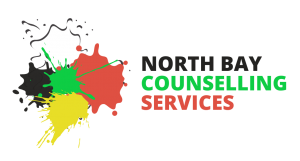Understanding Attachment: How Our Early Bonds Shape Our Relationships Today

As a therapist, I often see how the quality of our closest relationships—how safe, connected, or distant they feel—can be traced back to something deep within us: our attachment style. Whether we’re aware of it or not, attachment patterns developed in childhood profoundly shape how we relate to others in adulthood—especially in romantic partnerships, friendships, and even with our own children.
Let’s take a closer look at what attachment is, how it forms, and—most importantly—how we can begin to shift patterns that no longer serve us.
What Is Attachment?
Attachment is a deep emotional bond that develops between a child and their caregiver. This bond lays the foundation for how we view ourselves, others, and relationships throughout life. Our earliest experiences of being soothed, seen, and supported (or not) teach us whether the world is a safe place and whether we are worthy of love and care.
The Four Attachment Styles
In Childhood:
Children develop attachment styles based on how consistently and sensitively their caregivers respond to their emotional needs:
- Secure Attachment: The child feels safe, seen, and soothed. Caregivers are consistent and emotionally available.
- Anxious (Ambivalent) Attachment: The child experiences inconsistent caregiving—sometimes present, sometimes not. They become hyper-aware of others’ moods and needs.
Avoidant Attachment: Caregivers may be emotionally distant or rejecting. The child learns to self-soothe and suppress emotional needs.
Disorganized Attachment: Often arising from fear, trauma, or abuse, this child experiences caregivers as both a source of comfort and fear, leading to confusion and distress.
In Adulthood:
These early styles often show up later in life as:
- Secure: Comfortable with intimacy and independence.
- Anxious: Craves closeness but fears abandonment; may become preoccupied with relationships.
- Avoidant: Values independence and may pull away from intimacy or feel overwhelmed by others’ needs.
- Disorganized (Fearful-Avoidant): Struggles with both intimacy and independence; often feels unworthy of love and fears being hurt.
How Attachment Forms
Attachment develops in our earliest years based on how attuned our caregivers were to our emotional and physical needs. But it’s not about perfect parenting—it’s about “good enough” parenting. When caregivers regularly respond to distress with warmth, presence, and safety, the child builds secure attachment. When that’s missing, inconsistent, or traumatic, insecure patterns can develop.
Importantly, attachment styles are adaptations, not flaws. They once served to help us survive in our environment. But as adults, these same patterns may limit intimacy, connection, and emotional safety in our relationships.
How Attachment Affects Us
Your attachment style may affect:
- How comfortable you feel with closeness or independence
- How you react to conflict
- How you express needs and emotions
- Whether you trust others
- How you handle breakups or transitions
- How you parent your own children
These patterns are often unconscious, but with reflection and support, they can be brought into the light and transformed.
Can Attachment Styles Change?
Yes. While early attachment patterns run deep, they are not fixed. Through therapy, healthy relationships, self-awareness, and new emotional experiences, we can create what’s called earned secure attachment—a more grounded, connected, and secure way of relating.
How to Shift Patterns of Attachment
- Increase Awareness: Start by learning about your own attachment style. Naming the pattern is a powerful first step.
- Reflect on the Past with Compassion: Understand where your patterns come from, without blaming yourself or others.
- Build Emotional Regulation Skills: Learn to sit with discomfort, soothe anxiety, and stay grounded during conflict.
- Practice New Ways of Connecting: Lean into vulnerability, set boundaries, and express needs clearly.
- Seek Secure Relationships: Healing often happens in relationship. Trusted friends, partners, or therapists can offer new experiences of safety and connection.
- Therapy: Working with a therapist trained in attachment can help you uncover unconscious patterns and gently shift them over time.
Want to Learn Your Attachment Style?
Check out our resources at North Bay Counselling to take a free Attachment Style Questionnaire and start your journey toward deeper connection and self-understanding.
You Don’t Have to Do This Alone
At North Bay Counselling, we are here to walk alongside you as you explore your patterns, heal from the past, and build more fulfilling relationships. Whether you’re navigating anxiety, relationship struggles, or family dynamics, support is available.
Reach out today to schedule a session. Healing starts with awareness—and the courage to take the next step.
You are worthy of secure, loving connections. Let’s work together to help you feel that—deeply and truly.













